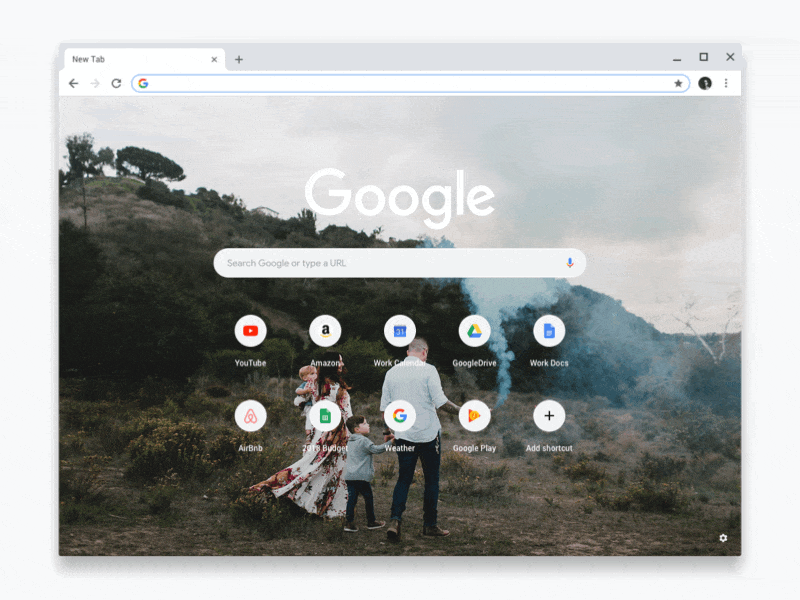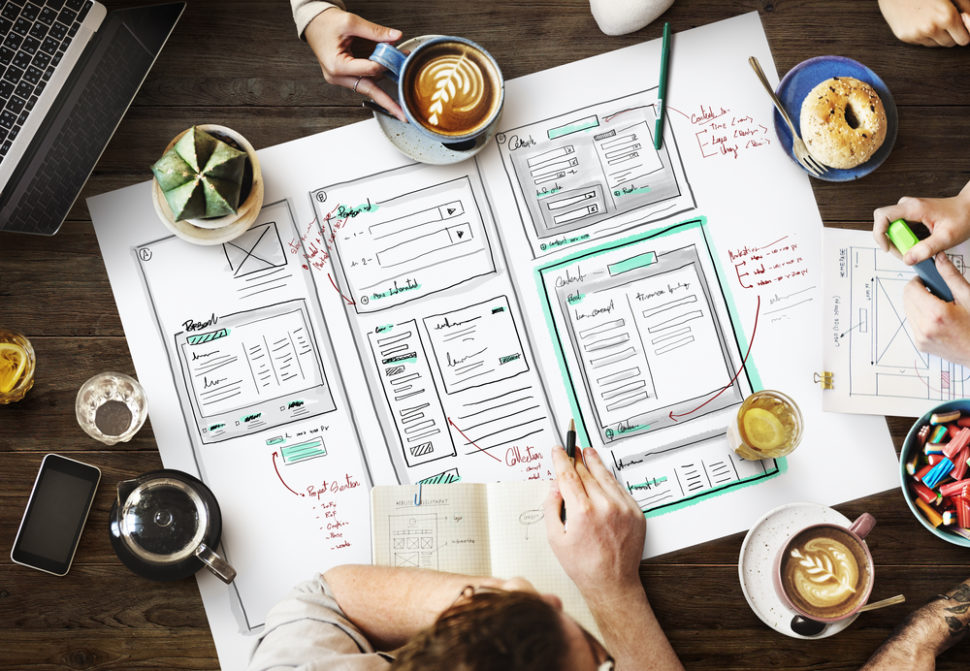Maintaining brand relevancy involves more than just PPC campaigns.
Modern marketing strategies require robust, diverse, and dynamic agility to keep up with a changing social landscape and audience. For instance, more and more brands need a social purpose to survive let alone succeed.
But another main aspect drives brand relevancy in our increasingly visual age — User Interface design. For the uninitiated, UI involves how a user interacts with your web page.
Consider it like the formatting on a page or different parts of a web page.
This extends to font choices, video content, 3D graphics, parallax, and more. And while social media marketing needs to change almost daily, UI trends stick around for a bit longer.
What are the 5 UI design trends that help brands maintain relevancy?
UI Design Trend #1: Diverse Video Content

Since 2016, digital marketing trends showed that video content attracted and retained more users. In fact, we have several articles out already about how to create your own robust video marketing strategy.
But for 2019, the big trend to zero in on relates to diverse video content.
The visual media taps into and engages several parts of the brain. But many users don’t activate the sound on videos they may watch while scrolling Facebook, Twitter, or another platform.
Despite this, quick promo videos are more popular than ever.
Videos, regardless of audio, make for dynamic and engaging website inclusions. In order to fully maximize video content potential, be sure to integrate different types of videos into your strategy.
You can use tutorial type videos, teasers, in-depth interviews, simple product shots, or even something like graphic typography.
Do some split level testing and see which campaigns your audiences prefer.
UI Design Trend #2: Personalization and Originality

Another top UI design trends includes personalization, originality, and inventiveness.
As you can see in the image above, Google implemented customized tab backgrounds to up the personal factor for their web browser Chrome.
This strategy extends into their news feed preferences, themes, color options, ad preferences, and more. In fact, you can customize almost everything in your Chrome web browser these days.
This decision comes from the developers and designers themselves.
By giving the freedom of choice to the users, they elicit feelings of personal involvement or investment. You can find examples of this in every aspect of daily life from picking a coffee beverage to the computer OS you choose.
But originality plays a role just as much as the personalization factor; that’s where the next UI design trend comes in.
UI Design Trend #3: Color Contrast and Gradients
Utilizing image-heavy copy, bold typography, and other visually dynamic elements won’t matter if your users have issues discerning text from the background of your website.
Color contrast enhances accessibility, usability, and overall aesthetics.
This might involve consulting the color wheel or simply deciding what colors your brand wants to use this year. But contrast doesn’t necessarily require lots of color like the image above.
It could simply feature a hero image and more visually dynamic fonts.
You can also opt for color gradients to add more layers to your UI design. However, this method requires a bit more color theory knowledge. So if you want “big bang for your buck” without a ton of investment, opt for contrast.
If you are a more graphically inclined company, your brand may choose more dynamic color gradients to associate design-oriented choices with your brand.
By keeping these decisions fresh, it engenders the idea that your brand is not only relevant but ahead of the UI design curve.
UI Design Trend #4: Parallax, Interactions, and Transitions
You might be asking yourself a big question here: what is parallax?
In regards to UI design, it relates to parallax scrolling: where background images move more slowly than images in the foreground. This helps create the illusion of depth on a 2D screen.
Like color contrast, this can greatly affect how users engage with your websites and, in turn, your overall brand.
Using creative transitions and parallax can enhance user experience and amp up perceived impressiveness and aesthetic enjoyment.
That’s why EDGY’s prediction for UI design in 2019 revolves around PWAs or progressive web apps.
We made the move to Edgy.app from our original Edgy Labs.com address to pre-empt the inevitable move to .app addresses.
Not only does it improve content and brand relevancy, but it improves overall page speed load times, too. That means that users can more effectively and efficiently engage with more of your content.
It also allows for smoother integration of UI design trend #5 on this list.
UI Design Trend #5: Dynamic UI Elements (3D Graphics)
Dynamic UI elements keep users engaged by activating different sectors of their sensory receptors. Video can obviously engage users on an audio/visual level while moving graphics can attract user attention for longer.
But simple 3D graphics may be the most effective way to stay relevant for your brand this year. However, it can prove challenging for developers and designers skill-wise.
By design, 3D graphics resemble real-world objects as opposed to flat graphics. This means that users may resonate at higher emotional or realistic frequencies, relating feelings or real-world traits to your brand.
This extends to three-dimensional renders of furniture as used in things like the IKEA AR app. It also explains why Google incorporated Google Lens into their image search last year.
But other UI design choices such as no-frame backgrounds or higher contrast can provide the illusion of 3D elements for those on a tighter budget.
Your first step to creating a more relevant brand starts with defining which UI design trends matter most for your brand.


















a href=https://qaabildigital.com/ui ux design service.php rel = Dofollow UI UX designer /a is crucial to just about everything. It renders the latest technology accessible to the masses, makes our favourite apps and websites a pleasure to use, and determines which brands and products we return to over and over again. To put it simply, design matters.
HOW TO RECOVER YOUR CRYPTO / BITCOIN FROM SCAMMERS.
I want to share to the whole world how GEO COORDINATES HACKER helped me recover my stolen money. I thought I was going to lose everything I had invested into this crypto platform that turned out to be a scam, I was devastated when I lost all my funds to a scammer. When it comes to recovering lost cryptocurrency, GEO COORDINATES HACKER is the greatest. They have the most skilled bitcoin recovery specialists to handle your request and address any issues you may be having with bitcoin recovery. You can rely on GEO COORDINATES HACKER to do all in its power to help you recover your stolen money. If you need any help contact them by using Via
Email; geovcoordinateshacker@proton.me
Email; geovcoordinateshacker@gmail.com Telegram ( @Geocoordinateshacker )Website; https://geovcoordinateshac.wixsite.com/geo-coordinates-hack